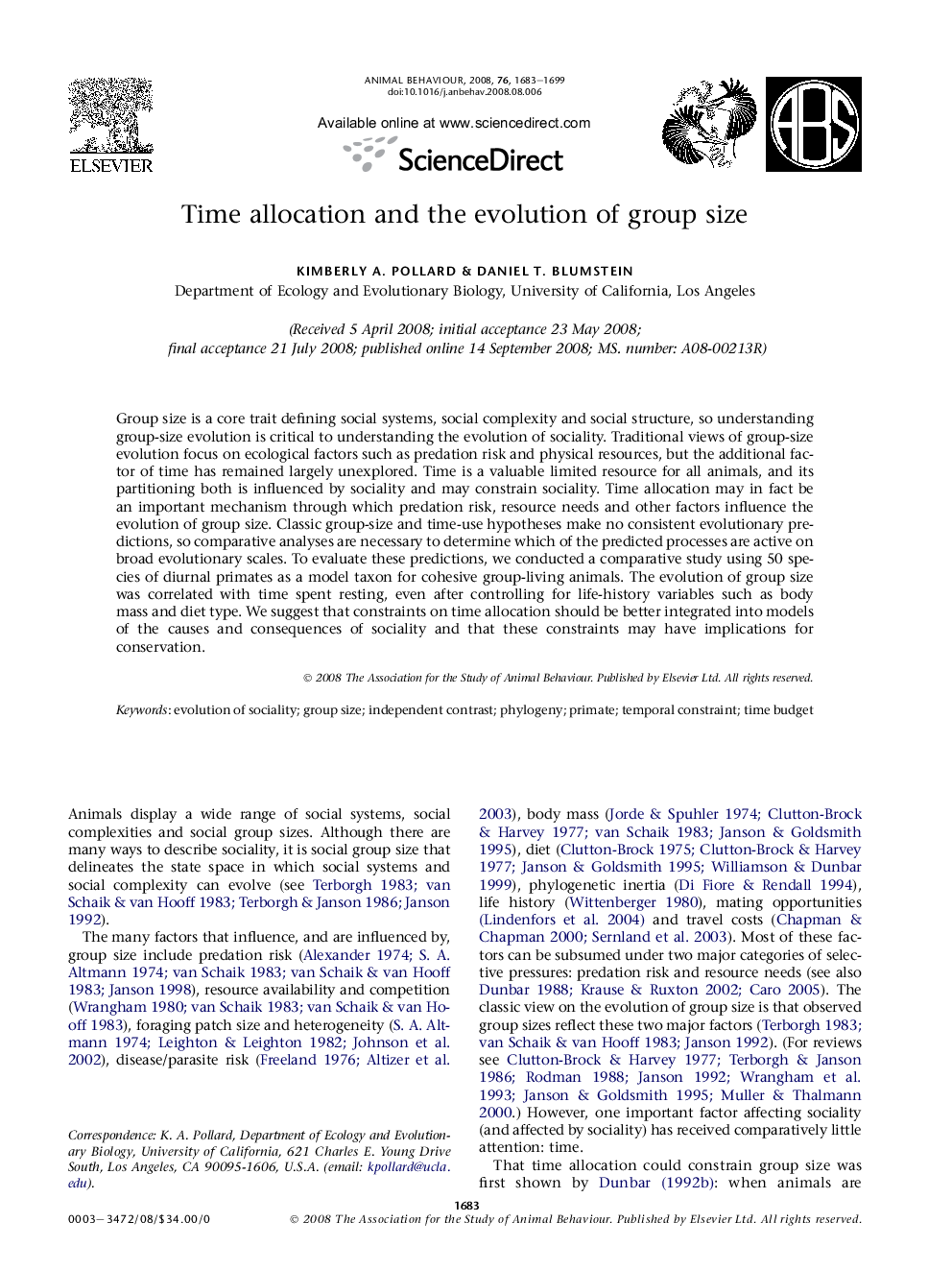| Article ID | Journal | Published Year | Pages | File Type |
|---|---|---|---|---|
| 2418643 | Animal Behaviour | 2008 | 17 Pages |
Group size is a core trait defining social systems, social complexity and social structure, so understanding group-size evolution is critical to understanding the evolution of sociality. Traditional views of group-size evolution focus on ecological factors such as predation risk and physical resources, but the additional factor of time has remained largely unexplored. Time is a valuable limited resource for all animals, and its partitioning both is influenced by sociality and may constrain sociality. Time allocation may in fact be an important mechanism through which predation risk, resource needs and other factors influence the evolution of group size. Classic group-size and time-use hypotheses make no consistent evolutionary predictions, so comparative analyses are necessary to determine which of the predicted processes are active on broad evolutionary scales. To evaluate these predictions, we conducted a comparative study using 50 species of diurnal primates as a model taxon for cohesive group-living animals. The evolution of group size was correlated with time spent resting, even after controlling for life-history variables such as body mass and diet type. We suggest that constraints on time allocation should be better integrated into models of the causes and consequences of sociality and that these constraints may have implications for conservation.
